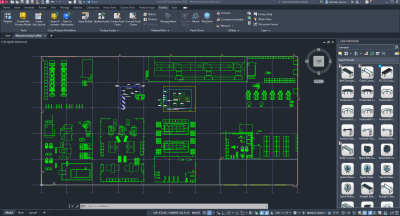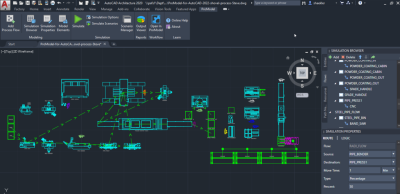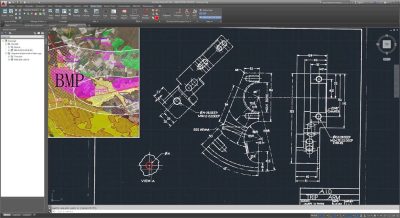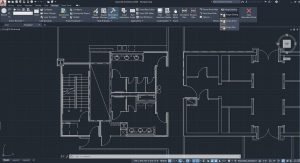AutoCAD Fundamentals Training Course
$4,950.00
- AutoCAD Online Course – Live with Trainer
- 24-Hours – 12 x 2-hour sessions
- Remote training over MS Teams
- Sessions are recorded and download links for each session are provide for future use
- Training for up to 1-3 People – Train 3 people for the price of 1
- Sessions can start within 7 days upon ordering
- Flexible sessions (i.e. consecutive or Monday, Wednesday, Friday, etc.)
- Courses are private and topics can be customised to suit
- Includes Certificate of Completion
- Training manuals are additional $159 each for soft copy
| One on One | Flexible | MS Teams | Recorded |
AutoCAD Fundamentals Training Course
Course Length: 24-Hours
- 24-Hours – 12 x 2-hour training sessions
- Remote training over MS Teams
- Sessions are recorded and download links for each session are provide for future use
- Price is for training from 1-3 People (Train 3 people for the same price as 1)
- Sessions can start within 7 days upon ordering
- Flexible sessions (i.e. consecutive or Monday, Wednesday, Friday, etc.)
- Courses are private and topics can be customised to suit
- Includes Certificate of Completion
- Training manuals are additional $159 each for soft copy
AutoCAD Fundamentals Training Course Guide Contents
AutoCAD online training course overview
Chapter 1: Getting Started with AutoCAD
• 1.1 Starting the Software
• 1.2 User Interface
• 1.3 Working with Commands
• 1.4 Cartesian Workspace
• 1.5 Opening an Existing Drawing File
• 1.6 Viewing Your Drawing
• 1.7 Saving Your Work
Chapter 2: Basic Drawing and Editing Commands
• 2.1 Drawing Lines
• 2.2 Erasing Objects
• 2.3 Drawing Vertical and Horizontal Lines
• 2.4 Drawing Rectangles
• 2.5 Drawing Circles
• 2.6 Undo and Redo Actions
Chapter 3: Projects: Creating a Simple Drawing
• 3.1 Create a Simple Drawing
• 3.2 Create Simple Shapes
Chapter 4: Drawing Precision in AutoCAD
• 4.1 Using Running Object Snaps
• 4.2 Using Object Snap Overrides
• 4.3 Polar Tracking at Angles
• 4.4 Object Snap Tracking
• 4.5 (Optional) Drawing with Snap and Grid
Chapter 5: Making Changes in Your Drawing
• 5.1 Selecting Objects for Editing
• 5.2 Moving Objects
• 5.3 Copying Objects 5.4 Rotating Objects
• 5.5 Scaling Objects
• 5.6 Mirroring Objects
• 5.7 Editing with Grips
Chapter 6: Projects: Making Your Drawings More Precise
• 6.1 Schematic Project: Electronics Diagram
• 6.2 Architectural Project: Landscape
• 6.3 Mechanical Project: Using Polar and Tracking
• 6.4 Mechanical Project: Surge Protector
• 6.5 Mechanical Project: Satellite
Chapter 7: Organizing Your Drawing with Layers
• 7.1 Creating New Drawings With Templates
• 7.2 What are Layers?
• 7.3 Layer States
• 7.4 Changing an Object’s Layer
Chapter 8: Advanced Object Types
• 8.1 Drawing Arcs
• 8.2 Drawing Polylines
• 8.3 Editing Polylines
• 8.4 Drawing Polygons
• 8.5 Drawing Ellipses
Chapter 9: Analysing Model and Object Properties
• 9.1 Working with Object Properties
• 9.2 Measuring Objects
Chapter 10: Projects: Drawing Organization and Information
• 10.1 Architectural Project
• 10.2 Mechanical Project
• 10.3 Civil Project
Chapter 11: Advanced Editing Commands
• 11.1 Trimming and Extending Objects
• 11.2 Stretching Objects
• 11.3 Creating Fillets and Chamfers
• 11.4 Offsetting Objects
• 11.5 Creating Arrays of Objects
Chapter 12: Blocks
• 12.1 What are Blocks?
• 12.2 Inserting Blocks using the Blocks Palette
• 12.3 Inserting Blocks using the Tool Palettes
• 12.4 Working with Dynamic Blocks
• 12.5 Inserting Blocks using the DesignCenter
Chapter 13: Projects: Creating More Complex Objects
• 13.1 Mechanical Project 1: Plate
• 13.2 Mechanical Project 2: Gasket
• 13.3 Mechanical Project 3: Plate
• 13.4 Mechanical Project 4: Rocker Arm
• 13.5 Architectural Project 1: Floor Plan
• 13.6 Architectural Project 2: Floor Plan
• 13.7 Civil Project: Parking Lot
Chapter 14: Setting Up a Layout
• 14.1 Working in Layouts
• 14.2 Creating Layouts
• 14.3 Creating Layout Viewports
• 14.4 Named Views
• 14.5 Guidelines for Layouts
Chapter 15: Printing Your Drawing
• 15.1 Printing Concepts
• 15.2 Printing Layouts
• 15.3 Print and Plot Settings
Chapter 16: Projects: Preparing to Print
• 16.1 Mechanical Project
• 16.2 Architectural Project
Chapter 17: Text
• 17.1 Working with Annotations
• 17.2 Adding Text in a Drawing
• 17.3 Modifying Multiline Text
• 17.4 Formatting Multiline Text
• 17.5 Adding Notes with Leaders to Your Drawing
• 17.6 Creating Tables
• 17.7 (Optional) Modifying Tables
Chapter 18: Hatching
• 18.1 Hatching
• 18.2 Editing Hatches
Chapter 19: Adding Dimensions
• 19.1 Dimensioning Concepts
• 19.2 Adding Linear Dimensions
• 19.3 Adding Radial and Angular Dimensions
• 19.4 Editing Dimensions
Chapter 20: Projects: Annotating Your Drawing
• 20.1 Mechanical Project
• 20.2 Architectural Project 1
• 20.3 Architectural Project 2
• 20.4 Civil Project
Chapter 21: Working Effectively with AutoCAD
• 21.1 Creating a Custom Workspace
• 21.2 Using the Keyboard Effectively
• 21.3 Object Creation, Selection, and Visibility
• 21.4 Working in Multiple Drawings
• 21.5 Copying and Pasting Between Drawings
• 21.6 Using Grips Effectively
• 21.7 Additional Layer Tools
Chapter 22: Accurate Positioning
• 22.1 Coordinate Entry
• 22.2 Locating Points with Tracking
• 22.3 Construction Lines
• 22.4 Placing Reference Points
Chapter 23: Projects: Productivity Tools
• 23.1 Schematic Project: Purifier Unit
• 23.2 Mechanical Project: 2 Views
• 23.3 Architectural/Civil Project: Formal Garden
• 23.4 Mechanical Project: Cover Plate
• 23.5 Architectural Project: Addition
• 23.6 Mechanical Project: Block
• 23.7 Mechanical Project: Plate
Chapter 24: Parametric Drawing
• 24.1 Working with Constraints
• 24.2 Geometric Constraints
• 24.3 Dimensional Constraints
Chapter 25: Working with Blocks
• 25.1 Creating Blocks
• 25.2 Editing Blocks
• 25.3 Removing Unused Elements
• 25.4 Adding Blocks to Tool Palettes
• 25.5 Modifying Tool Properties in Tool Palettes
Chapter 26: Projects: Creating and Organizing Blocks
• 26.1 Mechanical Project: Control Panel
• 26.2 Architectural Project: Furniture Layout
• 26.3 Civil Project: Utility Layout
Chapter 27: Creating Templates
• 27.1 Why Use Templates?
• 27.2 Controlling Units Display
• 27.3 Creating New Layers
• 27.4 Adding Standard Layouts to Templates
• 27.5 Saving Templates
Chapter 28: Working with Layouts
• 28.1 Creating and Using Named Views
• 28.2 Advanced Viewport Options
• 28.3 Layer Overrides in Viewports
• 28.4 Annotative Scale Features Chapter 29: Annotation Styles
• 29.1 Creating Text Styles
• 29.2 Creating Dimension Styles
• 29.3 Creating Multileader Styles
Chapter 30: Projects: Drawing Setup and Utilities
• 30.1 Interiors Project
• 30.2 Mechanical/Schematic Project
• 30.3 Civil/Map Project
• 30.4 Mechanical Project: Dimension Styles
Chapter 31: External References
• 31.1 Attaching External References
• 31.2 Modifying External References
• 31.3 Xref Specific Information
Chapter 32: Projects: Drawing
• 32.1 ISO A1 Title Block
• 32.2 Mechanical Project: Drill Press Base
• 32.3 Architectural Project: Office Tower
• 32.4 P&ID Project: Oil Lubrication System
• 32.5 Civil Project: Warehouse Site
Contact Us
If you would like a quote or have any further queries, feel free to contact us on 1800 490 514, [email protected] or by filling out the form below:
Get in Touch
If you have any questions or queries, feel free to call on 1800 490 514, email [email protected] or fill out the form below.





